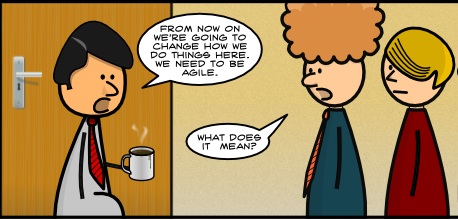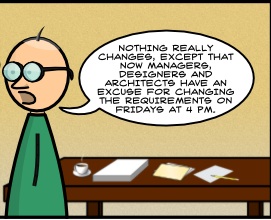Agile methodology turns 10 years old


Almost 10 years have passed since the “ Manifesto of a flexible software development methodology ” was released, which has contributed to processes that take into account changing requirements, constant interaction with customers, and software development in a few short iterations.
Agile Manifesto was released in February 2001, when a group of developers gathered in Utah to find an alternative to documentation-driven, “heavyweight” software development practices, such as the “waterfall method”, which was the gold standard for development at the time.
Flexible development techniques were used before that meeting in Utah, but it became the starting point in promoting the new concept to the masses. Now, 10 years later, a flexible software development methodology is becoming increasingly common, and more and more projects are being developed using flexible methodologies, such as Scrum and XP (extreme programming). Despite the potential dangers, agile experts agree that the use of such practices has contributed to the improvement of software development processes in general.
Ward Cunningham, one of the signatories to the manifesto at the time, believes that they were able to transform the industry, and the widespread introduction of flexible methodologies contributed to resolving the software development crisis.
')
The manifesto exceeded its goals, said Scott Ambler, chief methodologist for agile development at IBM Rational. He had a significant impact on the industry. Nowadays, it is difficult to find people who would not like to use flexible methods. And the chances of success when using them are much higher than when developing in traditional ways.
Nevertheless, Kent Beck, the founder of the “extremal programming” technique, is not so enthusiastic in his statements about the advantages of the flexible approach 10 years after the signing of the manifesto. They certainly made some people think more about the thoroughness of software development. But not all. There are still people trying to apply flexible methodologies in projects where this is not appropriate.
Apply flexible methods in the actual development process need to learn. It is necessary to study well all the techniques in order to have certain experience and apply flexible methods in practice. Good programming skills are essential for agile development. There are still a lot of people in the industry who actually consider programming tedious and unwilling to do it.
When introducing a flexible philosophy, organizational obstacles may arise. These methods work well when you need to frequently release versions of a product, and think about small parts, instead of a whole project. And problems often arise in the process of organizing a quick release of versions. Projects can get bogged down in labor-intensive processes and developers should use continuous iterations to avoid bottlenecks.
Agile is not a killer product lifecycle management tool. Need to be able to use them well. And now you can use project management systems based on flexible methodology.
The use of short iterations, frequent testing of modules and close communication with clients helps to develop the project faster and monitor the final result.
Scrum and XP are by far the two main methods of a flexible approach to development. Extreme programming pays more attention to the engineering side of product development. This is a systematic approach to programming. While XP focuses on the production process, Scrum focuses on management and release.
There are less common methods, many of them have fewer restrictions. For example, Kanban, focusing on customer feedback. Lean focuses on organizational efficiency, optimization, reduction of "waste".
The term "agile" was chosen at that meeting in Utah. People had in mind the liveliness and ease of use of these methods in the design. But some people often think light is superficial, which is not true.
via Computerworld
Source: https://habr.com/ru/post/107662/
All Articles